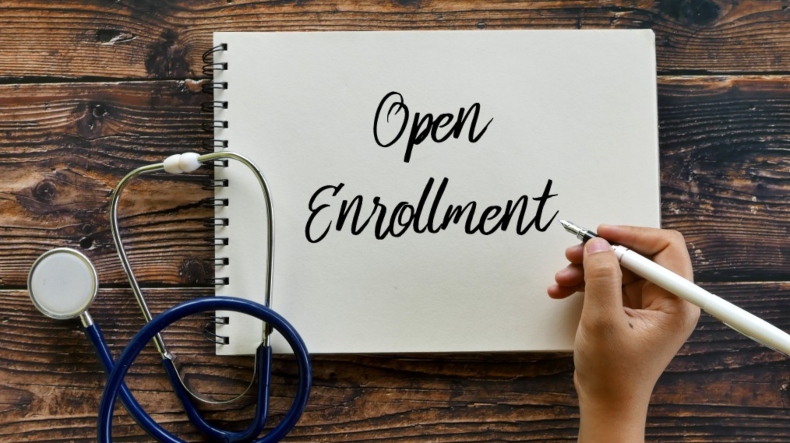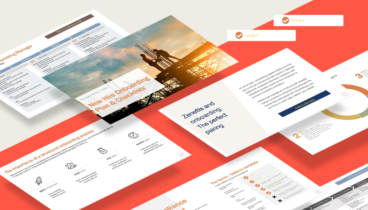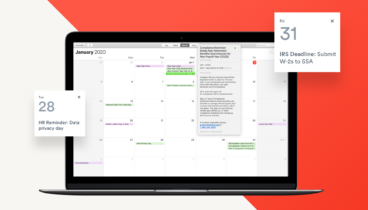You survived open enrollment! Now, what’s next?

For most business owners and HR professionals, the best thing about the open enrollment season is when it’s over. The hectic pace of enrolling, changing and re-affirming benefits selections for the entire staff in 45 days is challenging, to say the least. For enrollment team members, it’s time for a well-deserved pat on the back and a break.
It’s also a time to analyze, particularly in the early weeks after open enrollment. While the crises and triumphs are fresh in your mind, take the time to examine what went wrong and what went right, and why. Looking at the pain points in the process that occurred last year can mean a smoother (dare we say, easier?) open enrollment for the coming year. Look at the most common open enrollment problems, some that may have occurred at your company, and ready your team to deal with them come December.
Deadline deadbeats
There’s one in every company (typically more) – the employee that waits until the 11th hour to get their paperwork submitted. You call, email, text and cajole, but their lackadaisical attitude remains in place until 4 p.m. December 15, when they want to know everything about every plan before they decide. In your mind you know their mistake should not be your emergency, but you help as much as possible. But you think “there has to be a better way.”
Getting these employees to complete their paperwork is a must, but how? There are several tricks you can employ to flip the deadline deadbeats into enrollment stars.
One way is to get their spouses involved. Benefits selection for employees with spouses and children is a family affair. Getting spouses on your side – to get the employee to come in with their paperwork, get questions answered and finalize their elections – is a smart move. Send notices to spouses enrolled in your plans as well as to the employee. Provide information on the open enrollment process and phone numbers for who to call with questions about coverages and options. Then follow up with spouses as well as employees to get paperwork submitted. With a two-pronged attack, you may see the late enrollers up their game.
No spouse to tag-team the process? Be proactive. Rather than wait for the employee to show up, schedule an appointment to meet with them, review choices and complete the paperwork well in advance. Work with supervisors of your most frequent deadline violators to schedule a 30 minutes HR meeting in the earliest phases of open enrollment. With these employees done, you can breathe easier for the rest of the process.
Solve last-minute ‘What does this mean?’ questions
If a major pain point is employee confusion, you’re not alone. The majority of workers won’t take the time to really review their choices and options until crunch time, which puts you in the position of answering everyone’s questions in 45 days or less.
Anticipating this will occur annually is the first step. Planning for it is the action step.
Schedule a meeting with staff to discuss any changes coming for the new plan year, what their options are, and how to best make their elections. Your plan administrator may have representatives that can visit to run the meeting in October so everyone is ready for the November 1, when open enrollment begins.
If getting everyone together in the same room is an impossibility, send out information in advance. Ask employees to review their elections and come in with questions before November 1 so they can have time to digest any new information or discuss with their family.
Incomplete documentation
Even when employees turn in their forms on time there’s a good chance some will be incomplete: signatures forgotten, only some of the paperwork submitted, or documents overlooked.
Anticipate this: don’t let employees drop off and run. Ask them to wait a few moments while you review. Have a checklist handy that reminds you of all the forms that need to be submitted, check them off as you find them and make sure everything is signed and ready for delivery. A few minutes here can save a lot of time sending forms back for signatures (and often getting lost in the process) and waiting for them to be returned.
A master checklist that ticks off each employee and their forms is even more helpful. That way you know who is done and who you have to chase after.
Verifying ‘let it ride’ employees
One survey found the majority of workers, 93%, stick with the same benefits elections every year. That should be great news for open enrollment administrators, but the uncertainty drives them crazy. Are staffers leaving their elections the same, or have they forgotten/put off making new elections?
Even if your plan administrator doesn’t require an affirmation to keep benefits the same, you might want to start one. Send out a form that lists the employee’s current benefits and ask them to verify they’re making no changes for the coming year. When you check your master list of whose paperwork is outstanding, make sure to remind them that even if they’re not making changes, they need to submit the paperwork that verifies they want to keep everything the same. Fewer employees to chase down is a good thing.
The FSA crunch
Open enrollment often reminds employees to submit their medical and caregiver flexible spending account receipts for the past year. With the pressure of open enrollment, this paperwork is an added burden for HR and business owners.
Consider asking employees to submit their flexible spending receipts earlier. Send out reminders in October (or earlier) to start sending in receipts for reimbursement. In addition to taking the pressure off to get this done before open enrollment, remind employees they may be able to get their reimbursement checks in time for the holiday season. It’s a win/win for everyone.
If they can’t get them in before open enrollment, be sure you have a window to process claims after the beginning of the new year. If you do, you may want to notify staffers that claims may not be processed during the open enrollment rush – they may have to wait until the new year for reimbursements.
‘Only at my company’ enrollment issues
Your analysis may find enrollment issues unique to your staff members and company. For these, look at what the problem was and try to anticipate how you can avoid it for the coming year. You may need to brainstorm with employees or plan resources to come up with solutions, but they’ll be well worth the effort.
Paperwork, paperwork, paperwork!
The volume of paperwork open enrollment produces is massive. Wrangling it and making sure it’s all received and sent out correctly is a huge undertaking. If the mountains are overwhelming, consider a digital partner in open enrollment. Leveraging technology to administer plans, and even the open enrollment process itself may be the remedy you’ve been looking for. With so much available, tech may the solution to all your open enrollment headaches.




